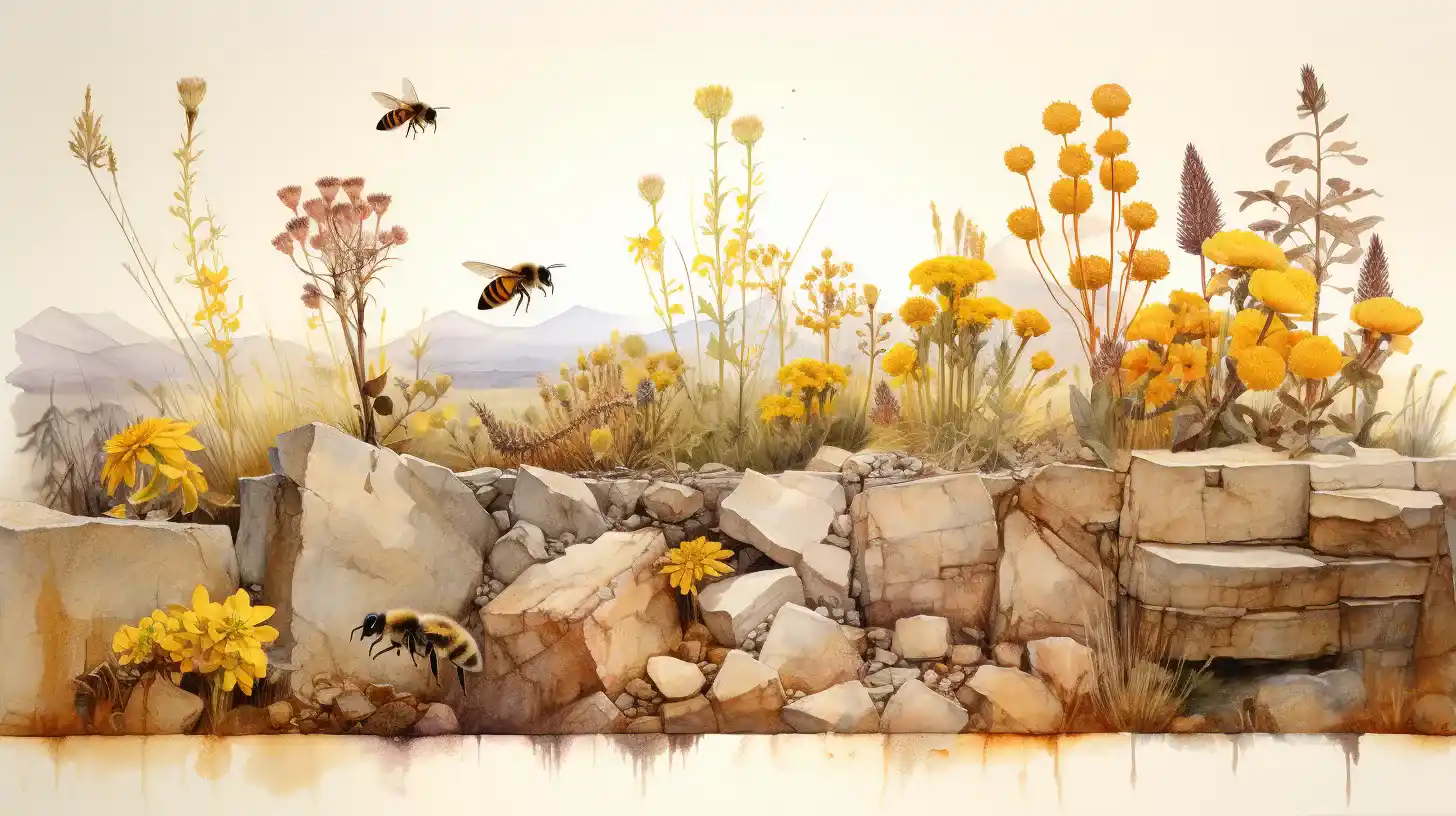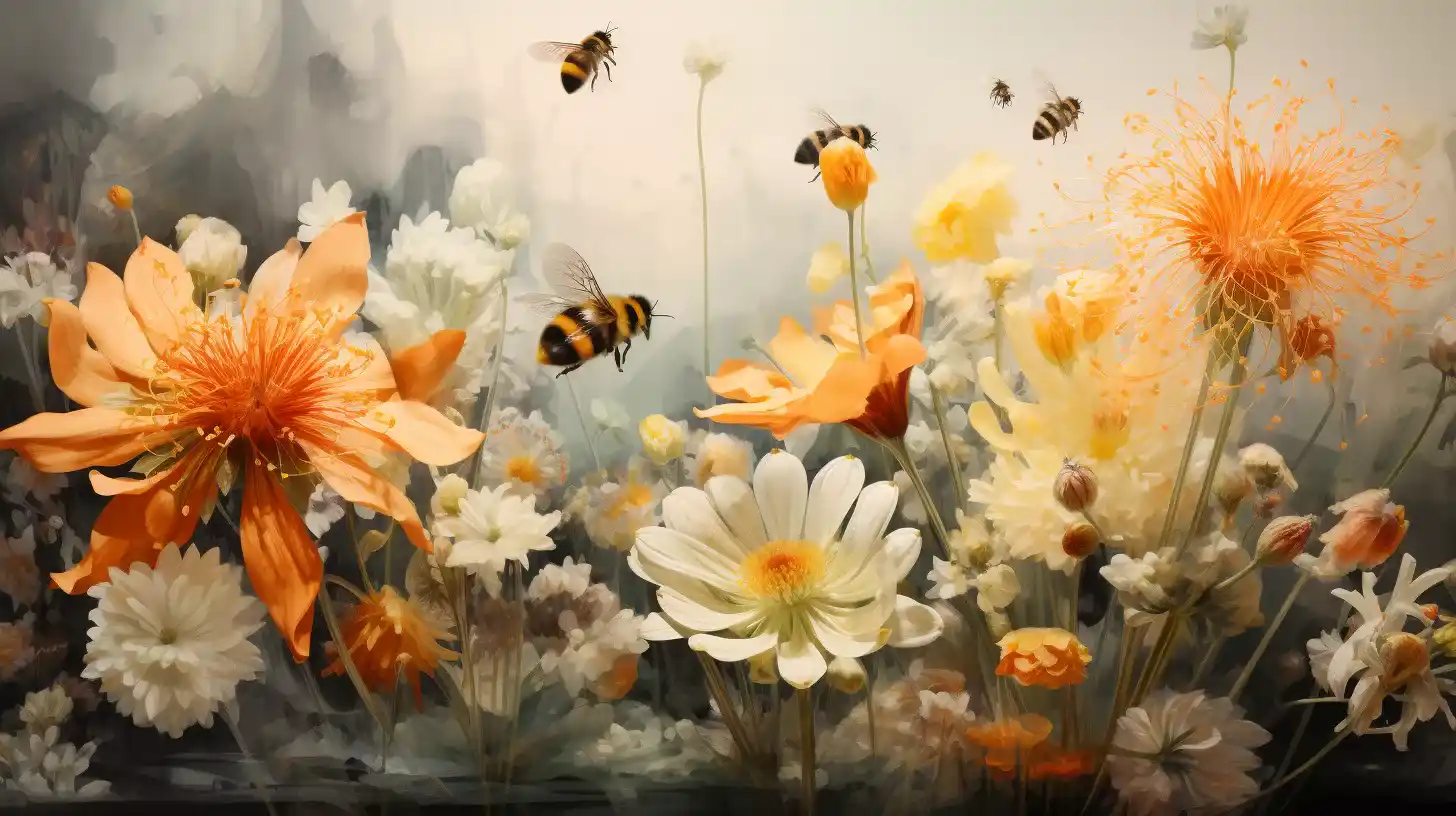Table of Contents
‘Flower Color Evolution’ is known for Flora’s vibrant colors and fragrant scents, but have you ever wondered how they got their hues? A new study by Monash University researchers has revealed that bees played a crucial role in the evolution of colors in flowers over millions of years.
The study, published in Proceedings of the Royal Society B, used computer simulations with the help of AI to recreate the landscapes of the first flowering plants that emerged during the Mesozoic era, between 252 million and 66 million years ago. The researchers then tested how these ancient plants would appear to pollinators like bees and birds, who have different types of color vision.
Bees’ vision predates flower color evolution
According to the lead author of the study, Associate Professor Alan Dorin, who is also the director of the NativeBee+Tech Facility at the Faculty of Information Technology, bees developed their visual perception long before the first flowers appeared on Earth.
“Bees evolved their vision to navigate among rocks, leaves, sticks, and bark, which were the dominant features of their environment before flowers,” Dorin said.

He added that the first flowers had to evolve more dazzling colors to stand out from their dull backgrounds and attract the attention of ancient pollinators.
Simulating prehistoric landscapes
To test how bees’ vision influenced flower color evolution, the researchers used color spectrum measurements from the Australian bushland, which is a geologically ancient continent, to simulate the prehistoric landscapes.
“We used data from Cairns to the southern tip of Victoria, which covers a wide range of habitats and climates, to model the landscapes of the Mesozoic era, when the first flowers emerged,” Dorin explained.
The researchers then compared how these landscapes would look to bees, who have ultraviolet (UV), blue, and green photoreceptors, and to birds, who have UV, blue, green, and red photoreceptors.
How bees shaped flower colors
The study found that bees’ vision had a strong impact on the evolution of colors in flowers over time. The researchers discovered that some modern flowers have frequently evolved common colors like yellow in their petals, which are easily perceived by bees.

“By comparing the simulated landscapes with the actual colors of modern flowers, we found that bees’ vision has guided flower color evolution for millions of years,” said the co-author of the study, Associate Professor Adrian Dyer, who is a vision scientist from the Department of Physiology at Monash’s Faculty of Medicine, Nursing and Health Sciences.
He added that this is the first time that a clear link between the visual perception of ancient pollinators and the bees of today has been established.
Implications for plant pollination
The findings of the study have important implications for understanding how plant species are pollinated in contemporary times, and for advancing the field of smart agriculture and efficient crop pollination.
“By knowing how bees see flowers, we can design better strategies to attract and sustain them as flower color evolution, which are vital for food security and biodiversity,” Dyer said.
He also said that the study opens up new avenues for further research on how other factors, such as climate change and human activities, may affect flower color evolution in the future.
Many scientists, including those involved in this research, tend to overlook the detrimental genetic alterations that underlie variations in flower color. Instead, they concentrate on how different pollinators interact with the resulting color shades, assuming that the flowers are adapting to match the available birds and insects.
However, although diverse pollinators may contribute to the propagation of flowers with specific colors, they do not bring about any new structures. In fact, they merely demonstrate the inherent resilience within creation, as designed by the Creator.
The Creator fashioned flying creatures with precisely suited mouthparts for pollinating these plants, as well as visual systems with enough flexibility to still recognize mutated or degenerated flower colors.